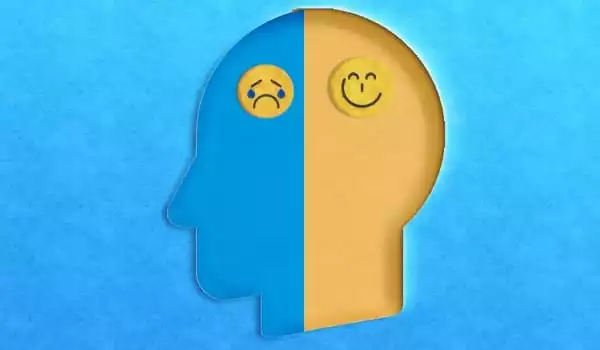A new study illustrates how socioeconomic characteristics affect depression treatment outcomes even when patients have equal access to therapy. According to recent research from the University of Cincinnati, patients seeking therapy for depression who have lower income and education, as well as those who are members of minority populations, have inferior treatment outcomes even when they have equal access to care.
The UC cross-college collaborative research, led by Jeffrey Mills, Ph.D., and Jeffrey Strawn, MD, was just published in the journal Psychiatric Services.
Strawn, a UC Health adolescent psychiatrist and professor in the Department of Psychiatry and Behavioral Neuroscience in the UC College of Medicine, said that previous research has concluded that people seeking treatment for depression with lower income and less education have worse outcomes due to a lack of access to quality health care, but it is difficult to isolate socioeconomic factors because they are often intertwined.
The researchers examined data from the CO-MED clinical trial, which involved 665 individuals seeking treatment for depression. In the randomized trial, all patients received equal access to treatment regardless of health insurance or income.
If you go home to a wealthy community with highly educated parents or spouse, you’re arguably in a lot better environment for the treatment to be effective than if you go to a disadvantaged neighborhood with other difficulties.
Jeffrey Mills
Study results
Following 12 weeks of antidepressant drug treatment in the trial, the team’s analysis indicated that non-white patients improved 11.3 percent less than white patients after controlling for sex, age, and treatment type. When compared to employed patients, those who were unemployed improved by 6.6 percent less. Patients with income in the 25th percentile improved by 4.8 percent less than patients with income in the 75th percentile.
Strawn remarked that the data are preliminary, but he was particularly interested to discover that patients without a college degree improved 9.6 percent less than college graduates.
“We think about these things in terms of access, we think about them in terms of income inequality, and I realize that education does track with those, but just having a college degree while controlling for all of these other factors still had a significant impact,” said Strawn.
The researchers also looked at the effect of combining socioeconomic characteristics, because separate components are frequently connected, according to Mills. Patients who were non-white, unemployed with no degree, and had income in the 25th percentile improved 26 percent less than white, employed with a college degree, and had income in the 75th percentile.
Mills stated that the findings do not refute the notion that a lack of access has an impact on treatment outcomes, but they do highlight the significance of considering a patient’s home environment when examining treatment success.
“If you go home to a wealthy community with highly educated parents or spouse, you’re arguably in a lot better environment for the treatment to be effective than if you go to a disadvantaged neighborhood with other difficulties,” said Mills, an economics professor at UC’s Carl H. Lindner College of Business.
Other research, according to Strawn, reveals that patients in resource-poor circumstances may be more affected by chronic variable stress, which means high stress in an intermittent and difficult-to-predict pattern. Other research suggests that chronic fluctuating stress is worse for patients than chronic persistent stress that is more consistent, he says.
“So this is, ‘I was able to pay my rent this month, but I’m not sure that I will be able to next month. And I have a job right now, but I don’t know that I will next month,'” Strawn said. “So it’s just the impact of all those things as well as maybe having relatives or kids who have fewer educational resources or other job-related stress, or potentially other health problems, and you’re still running into those same barriers in terms of access and cost and support there.”

Research application
According to Strawn, the study findings have the potential to influence therapeutic trials by creating studies that pay more attention to socioeconomic aspects that were previously missed.
“When we don’t control for these characteristics, which we typically don’t in clinical trials due to demographic disparities,” Strawn explained, “we may miss discovering a successful treatment because its effect is masked. As a result, failing to account for these elements may compromise our therapeutic development.”
Strawn believes that people who serve patients on a daily basis can apply the study’s findings in a more clear manner. While reducing barriers to therapy is vital, he believes physicians must also recognize that a patient’s socioeconomic surroundings may be hurting their ability to improve with treatment when monitoring progress and developing future treatment plans.
Mills believes the findings will be useful in developing and executing economic policy, such as the recently passed infrastructure bill or current discussions about the minimum wage. He claims that the impact of a policy on an individual’s socioeconomic environment, and hence their mental health, is rarely examined.
“Someone employed at a higher wage has a chance to improve their socioeconomic status and environment, and so they’re definitely less likely to get mental health problems,” he said. “If people with higher socioeconomic status do get mental health problems, what we’re showing is they’re more likely to improve if they get treatment.”
Team science
In the past, two researchers with different specialties from different colleges within a university might not have collaborated on research like this, but the partnership demonstrates the value of team science, a transdisciplinary approach to study.
Strawn stated that traditional multidisciplinary research typically involves a psychiatrist, a neurologist, and a psychologist from the College of Medicine working on a project together. While this has its uses, team science crosses fields and incorporates entirely other sets of skills, concepts, and methodologies.
“We think of multidisciplinary as a fruit salad with grapes and bananas, but everything is still distinct,” Strawn explained. “Then there’s transdisciplinary, where everything is so mixed up that it’s difficult to discern whose contributions are whose. That seems more like a fruit smoothie than disciplinary integration. That is, hopefully, what we have accomplished.”
Mills has previously encountered colleagues who were expected to work closely together but never produced a paper together because their skill sets were too comparable and they did not require each other to progress. Mills and Strawn, on the other hand, are interested in each other’s fields and contribute diverse, complimentary skill sets to the project.
“It goes beyond just being multidisciplinary, since when I get together with my coworkers, we still have very similar training. We use similar vocabulary and have comparable thoughts” Mills stated. “There isn’t the same cross pollination in venturing beyond your profession and thinking about other issues and offering each other ideas and notions that you would not have thought of.”





